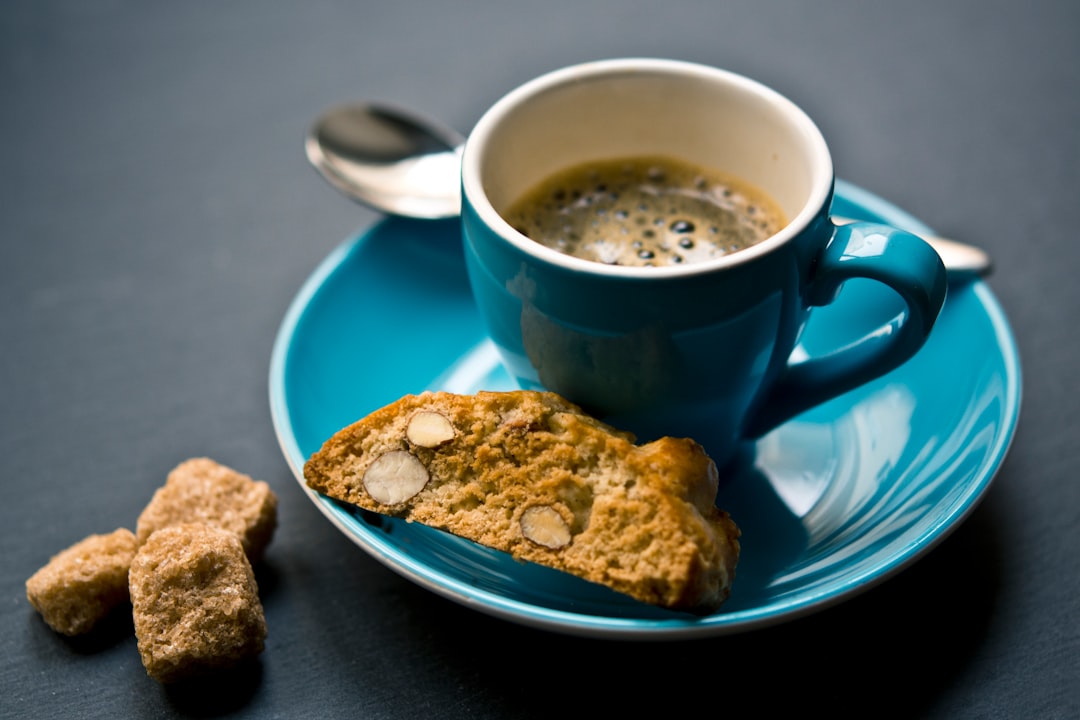Biscotti
Biscotti may have originated in Italy centuries ago but has since become popular all over the world. Its name comes from the Latin word 'bis coctus' or 'twice cooked'. This refers to the way in which biscotti is prepared - it is baked twice at low temperature in order to produce its unique crunchy texture.
Biscotti is often made with basic ingredients such as flour, sugar, eggs, and various nuts or dried fruits. Some recipes call for additional flavorings like cocoa, vanilla, or almond extract for a more intense taste. No matter the ingredients, biscotti's crumbly yet firm texture is what sets it apart from other cookies.
Not only is biscotti delicious, but it is also highly portable, making it ideal for office snacks or travel. Pack up a batch and share them with your colleagues or friends so they can savor its toasted, nutty flavor.
When baking biscotti, it's important to keep an eye on the oven to ensure it is not overcooked. The result should be a cookie that is crisp but not brittle, with a golden-brown exterior. Take some extra time to customize your biscotti with toppings of your choice - drizzle white or dark chocolate, or sprinkle chopped fruit or nuts over the top.
Whether you're hosting a special gathering or just looking for something sweet to enjoy at home, biscotti will be a welcome addition to your menu. With its delectable crunch and captivating aroma, this classic Italian cookie will never go out of style.
Biscotti recipes
Amazing Biscotti recipes sourced from the web.
The origin of Biscotti
The humble, unassuming biscotti has a surprisingly rich history that is sure to surprise even the most knowledgeable of food connoisseurs.
For centuries, Italians have been enjoying the hard, slightly sweet treat in various forms, but the true origin story of biscotti is an amalgamation of baking and sea-faring traditions. According to some stories, biscotti first came about during the Middle Ages when Tuscan sailors, looking for a way to preserve their bread while crossing the Mediterranean, decided to bake it twice, rolling it in boiling oil to create a crunchy and longer-lasting snack. This process became a standard procedure for all seafarers from the region, and eventually, the double-baked bread became known as biscotti The name came from the root word “biscotto”,which translates to “twice-cooked”.
Fast-forward to the 19th century, when Italian bakers began experimenting with flavors and recipes for the traditional biscuit. They added sugar, eggs, nuts and spices to the dough, creating a sweeter, more flavorful version that was quickly gobbled up by locals and travelers alike. At the same time, around the same area, another traditional baking craft was being developed: the art of frolla (flaky, crumbly pastry). Bakers in the region, who already had an understanding of twice-baked bread, combined their knowledge of frolla with their biscotti recipe to create a hybrid variation they called cantuccini. This combination of biscotti and frolla created a unique, cookie-like confection that was both crunchy and crumbly.
Today, biscotti continues to be a popular snack around the world: with endless flavor combinations and its convenient size, it’s the perfect sweet treat for any occasion. It has truly come a long way since its humble beginnings as a simple item for sailors at sea. For centuries, biscotti has brought joy to people near and far, and its deliciousness only continues to transcend from generation to generation.
Types of Biscotti
Biscotti, also referred to as cantuccini, is a dry, crunchy Italian treat that has been making people weak-kneed with delight for centuries. But what most people don’t know is that there are many types of biscotti out there, each offering its own unique texture and flavor profile.
The traditional style of biscotti is made with flour, sugar, eggs, pine nuts, and aniseed. This base recipe can be adapted according to the type of biscotti desired. For example, different types of nuts or dried fruit (such as figs or apricots) can be added to create variations in flavor and texture. Additionally, chocolate chips or chunks, coffee or espresso powder, or even liqueurs can be folded into the dough to create one-of-a-kind biscotti.
Butter biscotti, for example, uses unsalted butter instead of olive oil to create a richer biscotti. This variation usually contains almonds, though walnuts and hazelnuts can also be used. The resulting treats are more moist than traditional biscotti, and tend to be more cake-like in texture.
Almond biscotti is another classic variety that uses ground almonds instead of pine nuts. These are slightly sweeter than the traditional version, and the almond flavor really stands out.
Finally, there is amaretti biscotti, which uses a base of egg whites, sugar, and ground almonds. These are flavored with almond extract, and they are much softer and chewier than their other biscotti counterparts.
These unique batches of biscotti add delightful nuances to the traditional cookie. From the classic Italian recipe to the more indulgent decadent variations, biscotti offers something for everyone. Whether enjoyed with a cup of tea or espresso, the crunchy, sweet bite of biscotti is sure to be a hit.



